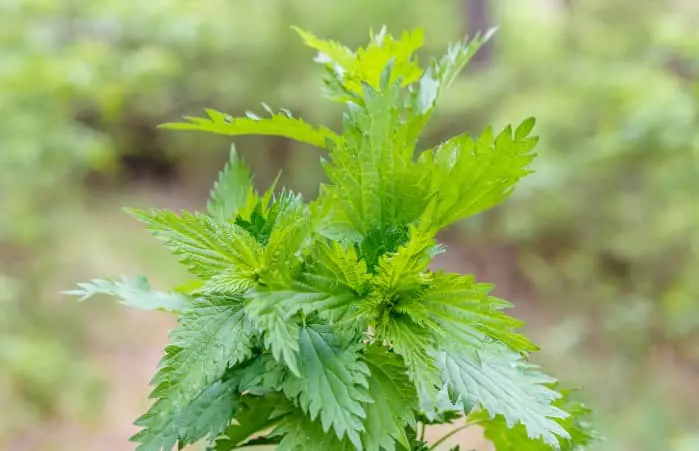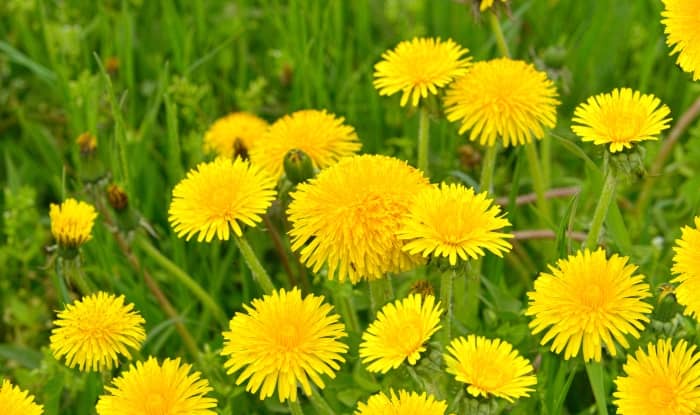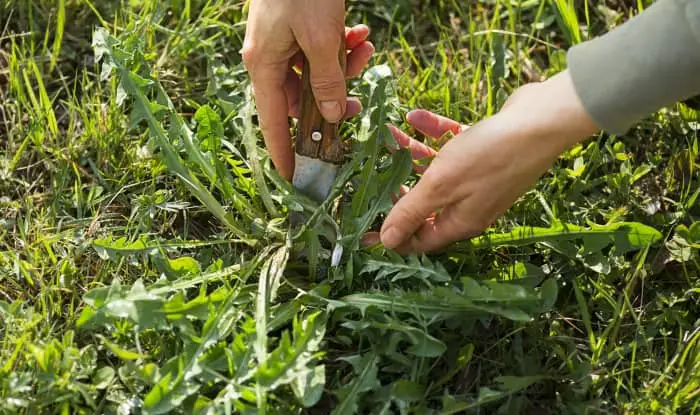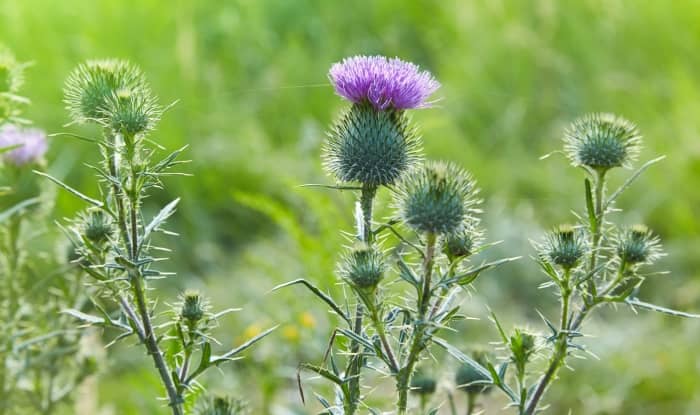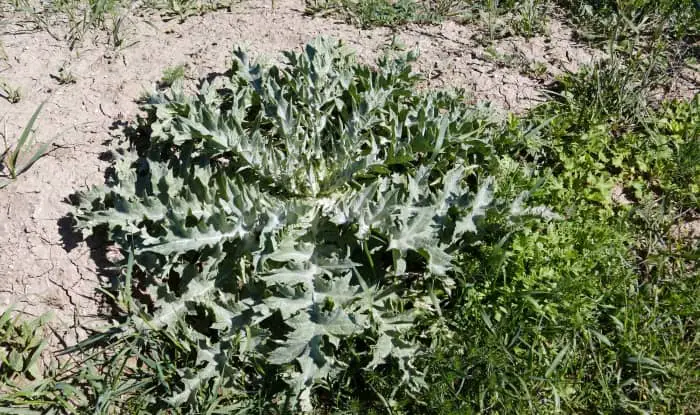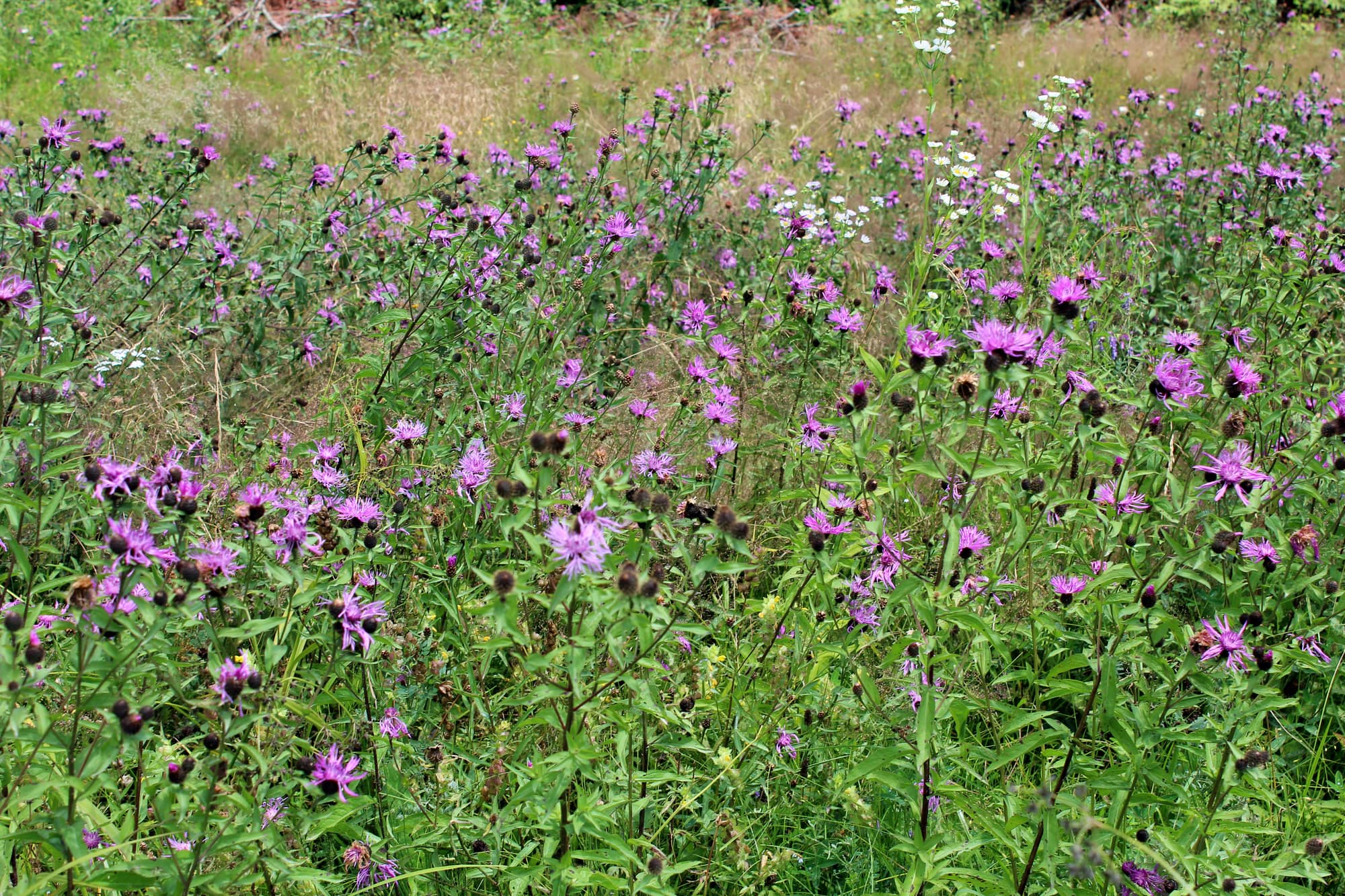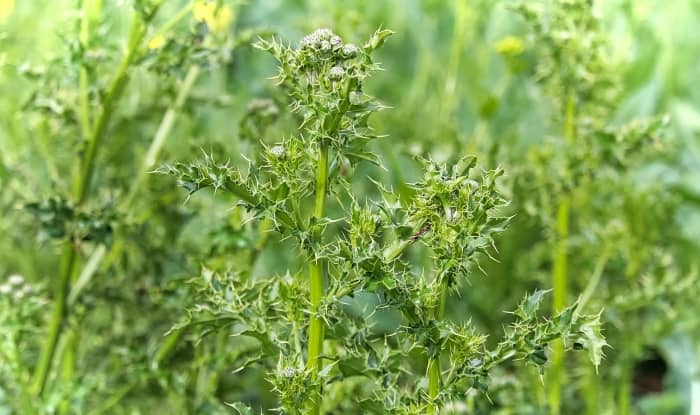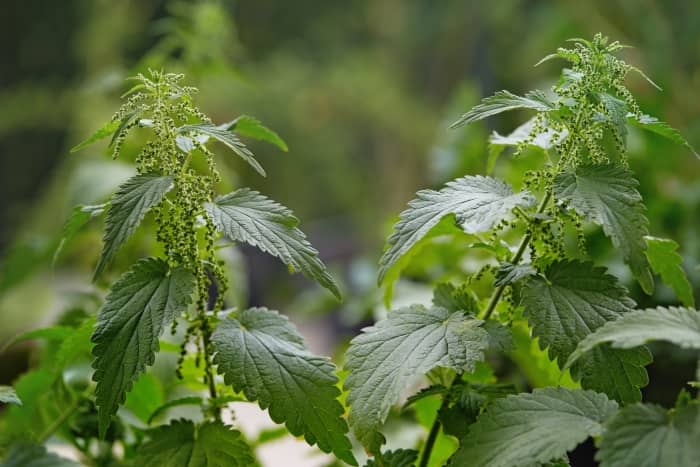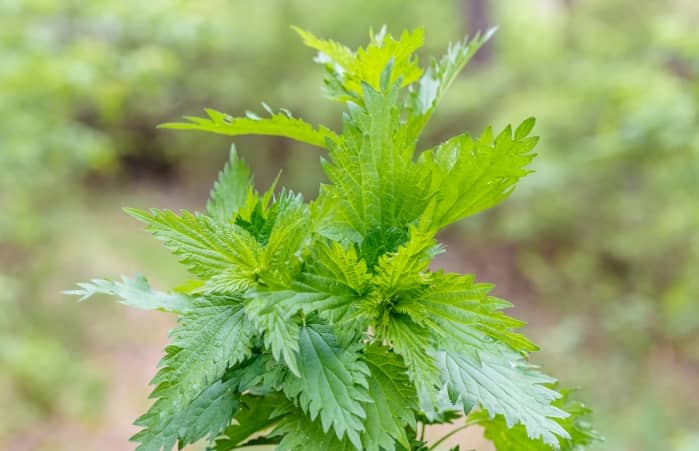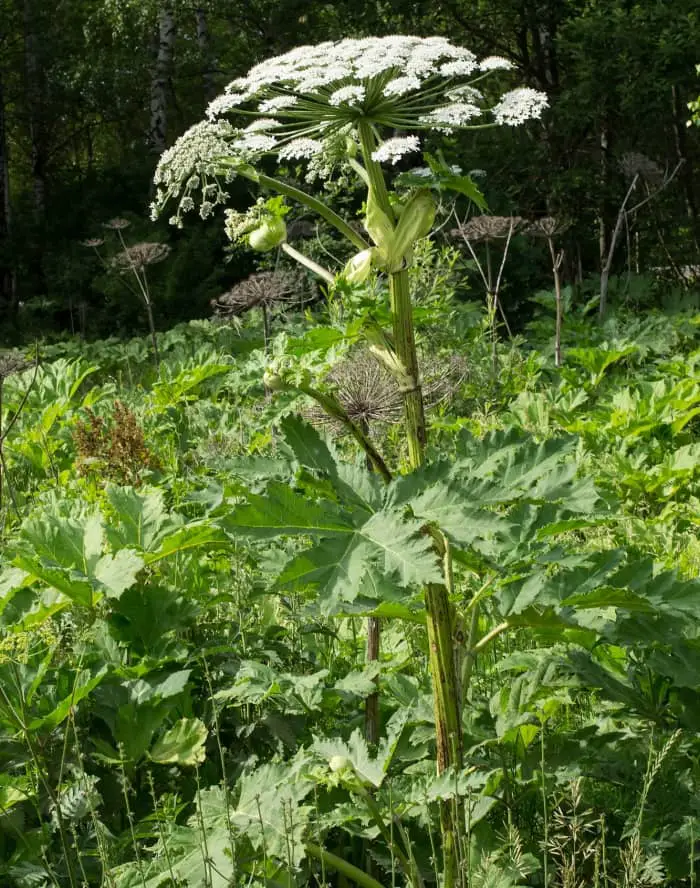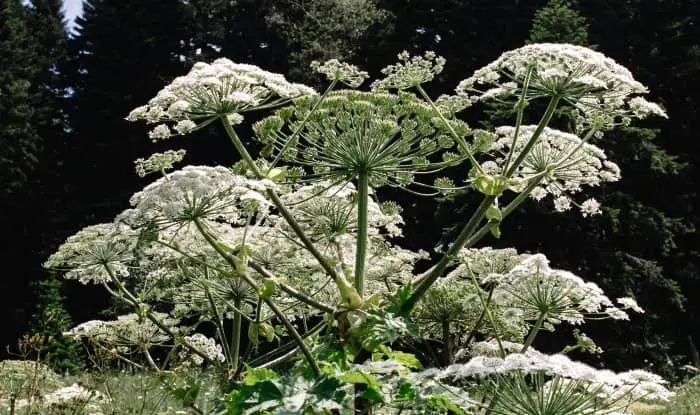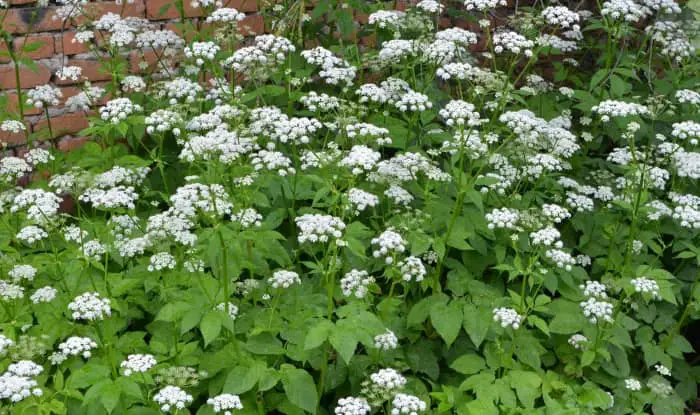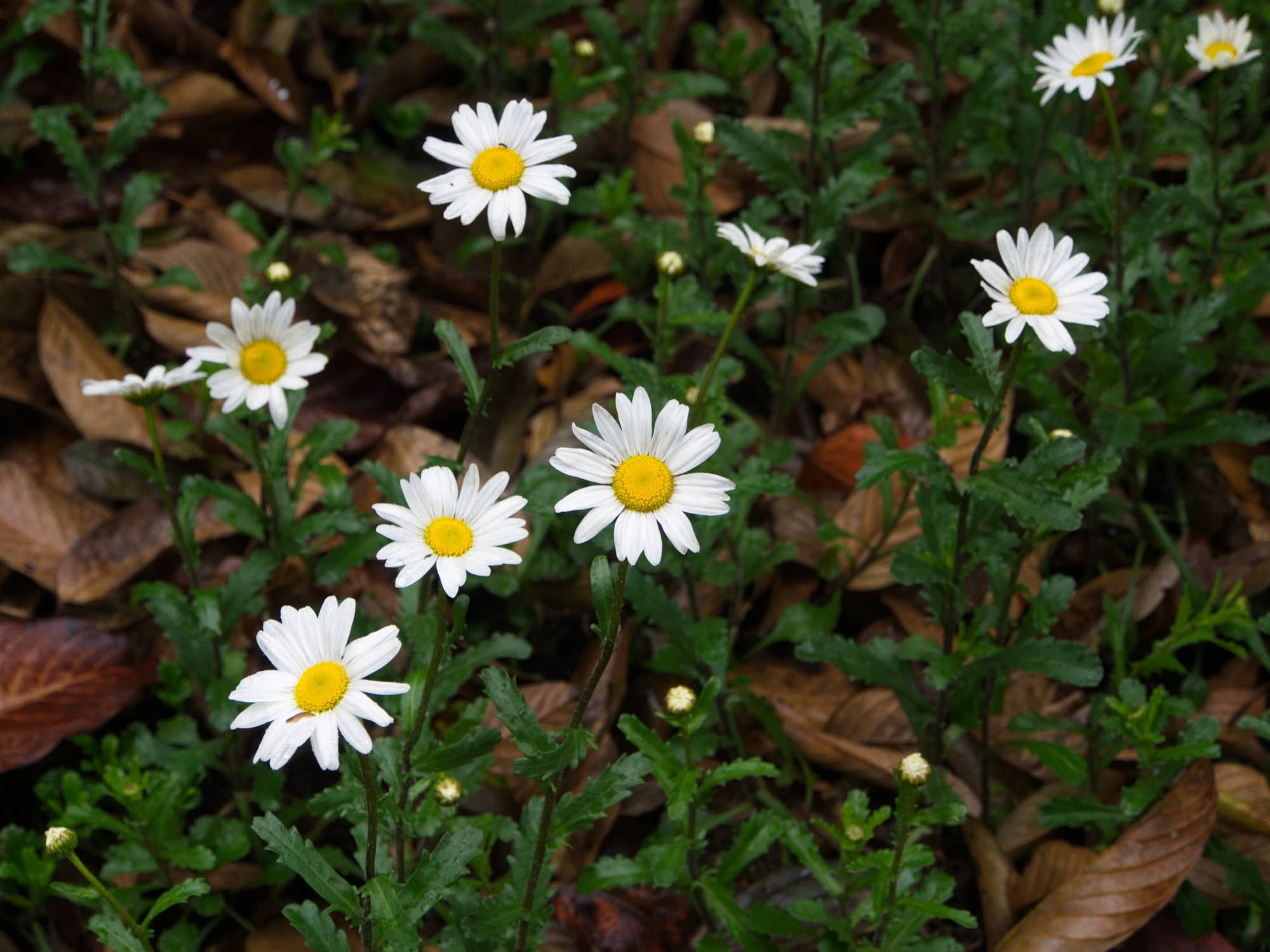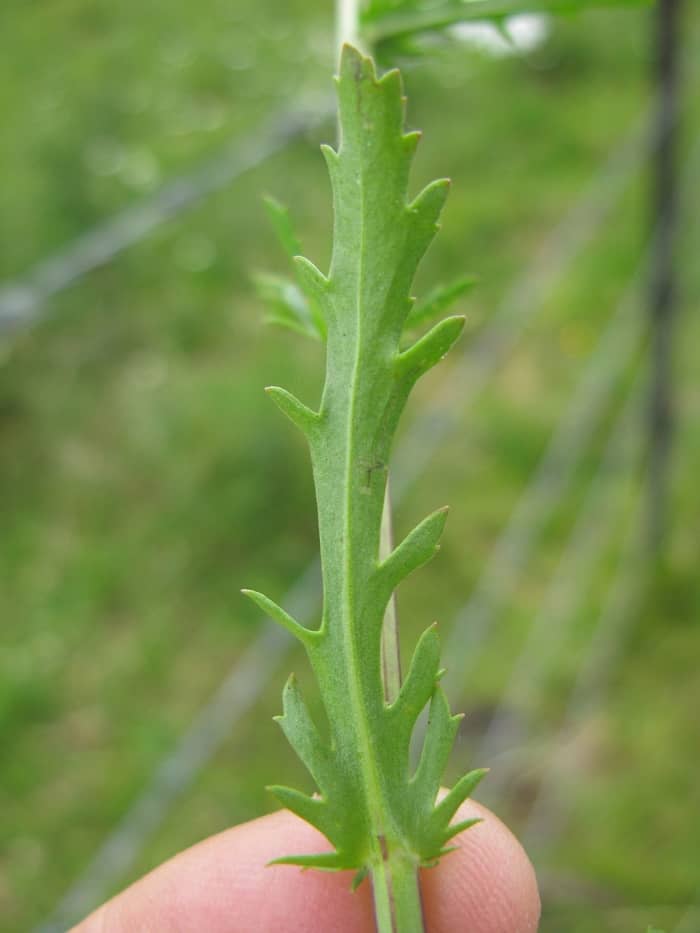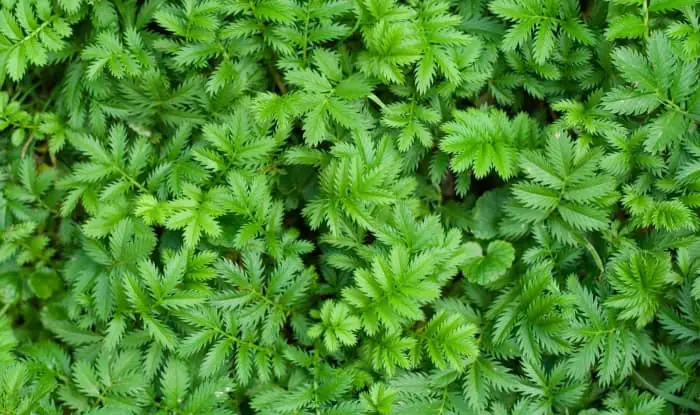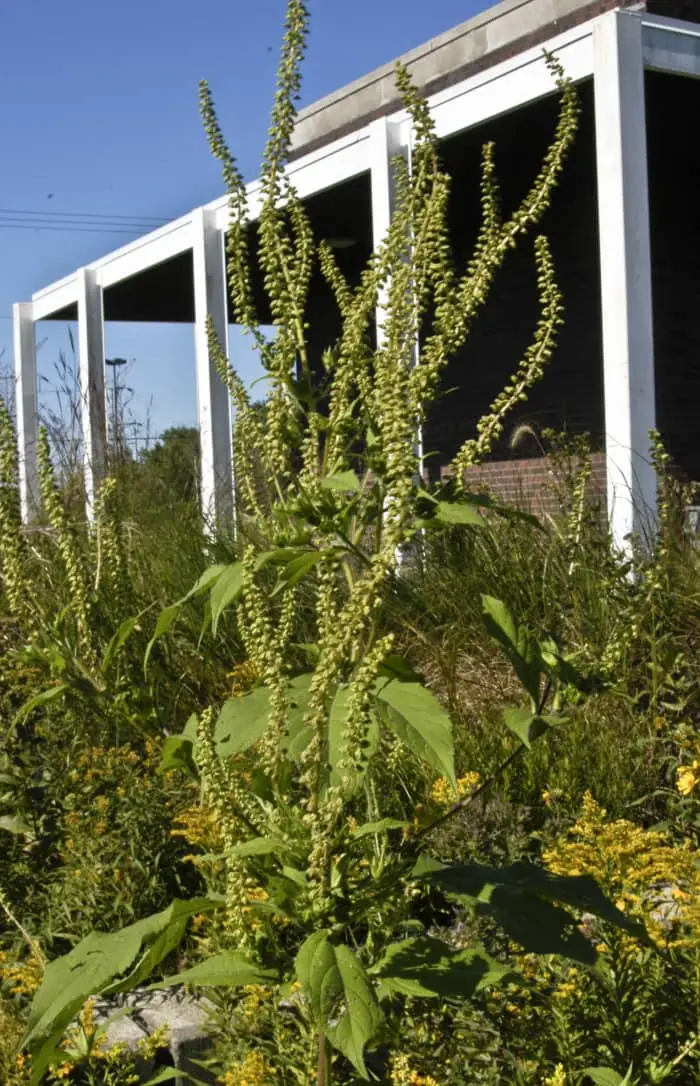Have you come across some weeds with jagged leaves in your yard?
To help you identify them, we’ve prepared this list of the most common types with photos and detailed descriptions.
Let’s dive in.
Dandelions (Taraxacum spp.)
Dandelions are one of the most common weeds to find growing on your lawn. There are more than 250 types and they all have a similar distinctive-looking flowerhead.
Most dandelions have yellow flowers but you can also find them with pink and white flowers as well.
Dandelions have long, narrow, leaves with jagged lobes that grow in a basal rosette. Sometimes the leaves are hairy and sometimes they’re smooth.
Most dandelions bloom in the spring. The flowerhead consists of numerous florets and grows at the end of a long stalk. When dandelions set seed, the flowerhead is replaced by a seed puff of small seeds that are easily dispersed by the wind.
Bull Thistle (Cirsium vulgare)
Thistles are some of the most easily recognizable weeds. Bull thistles have spines that cover the leaves and stems of the weed up to the pink-purple flowers. They also have spiny bracts that grow beneath the flower head.
Bull thistles are biennial weeds. In the first year, bull thistles grow a basal rosette of flat leaves with big spikes down the middle. The leaves have jagged edges that are also spiky. In the second year, bull thistles develop a tall stem that can reach 7 ft. in height. Then the plant flowers.
You’ll find this prickly weed growing in various conditions and places. But thistles thrive in locations with good sun exposure and rich soil.
Creeping Thistle (Cirsium arvense)
Also called Canada thistle, creeping thistle gets its name from its creeping lateral root growth that allows it to quickly spread and form dense clumps
Creeping thistle is an upright herbaceous perennial weed that’s native to Europe, North Africa, and Western Asia. But it’s now found widely around the world in suitable climates.
It was introduced to the US in the 17th century. But 43 states now consider creeping thistle a noxious weed.
The plant grows up to 5 ft. high. And as its root system expands, it sends up vertical shoots and forms vast clonal colonies.
The thick green stalks are smooth and branched. And the dark green leaves have jagged lobed covered in sharp spines. The leaves can grow 20 cm long and 3 cm wide and are larger lower down the plant than on the upper part.
The distinctive flowers are pink-purple and consist of numerous small petals.
Creeping thistle’s aggressive root growth, along with prolific seed production and dispersal, make this a very difficult weed to control.
Garlic Mustard (Alliaria petiolata)
This cool-season biennial herb is one of the most invasive lawn weeds, and it will quickly spread in your backyard.
The plant grows about 3-4 feet tall when fully mature. You can identify the weed by the easy-to-recognize heart-shaped leaves with toothed, jagged edges. And when in bloom, the small white flowers have 4 petals.
There’s an easy way to confirm that it’s garlic mustard:
Try crushing a leaf between your fingers. It should give off a strong smell of garlic and onion.
It’s important to control garlic mustard if you find it growing on your lawn. Each plant produces hundreds of seeds allowing it to easily spread. And the seeds can survive in the soil for approximately 5 years. So it will keep appearing for years after you first clear an area.
Stinging Nettle (Urtica dioica)
Stinging nettle is a herbaceous perennial weed that everyone has a brush with at some point. And that brush is often painful. Because stinging nettle has large, serrated-edged leaves with stinging hairs that cause a painful rash when touched.
Once you’ve had this unpleasant experience you quickly learn to recognize the sight of stinging nettle leaves. They’re dark green and grow up to 6-inches. Growing oppositely on a green, wiry stem. When the weed blooms in the summer it produces clusters of small greenish-white flowers.
Stinging nettles are an invasive weed. The plant produces a large volume of seeds. And also spreads through rhizomes. It’s very difficult to eradicate once it becomes established in an area.
Despite being a weed that most people don’t want anything to do with, it also has some use. Stinging nettles are an edible weed. And you can eat the roots, leaves, and stems. Just remember to cook them first. It’s also a medicinal plant with many health benefits.
Giant Hogweed (Heracleum mantegazzianum)
Giant hogweed is a perennial flowering shrub that originated in the western Caucasus region of Eurasia but has now spread around the world. First as an imported ornamental plant, and now as a noxious weed.
In the right conditions, this broadleaf weed can grow 18 ft. tall. With a stiff tall stalk that grows up to 10 cm thick and 13 ft. high. When it blooms, you can see multiple clusters of white flowers growing from short stalks up into the air. They grow out from a central point, resembling an umbrella.
The fully grown weed has gigantic leaves with jagged edges that can grow up to 5 ft. wide.
It’s sometimes mistaken for similar-looking plants such as cow parsnip, woodland angelica, purple stem angelica, lovage, valerian, and Queen Anne’s lace.
But giant hogweed grows much taller than any of these. And the stalk has reddish-purple spots and coarse bristles. None of the lookalikes have both of these.
You should wash your hands immediately if you touch hogweed. The watery sap is phototoxic and can cause serious burns if you expose your skin to sunlight.
Ground Elder (Aegopodium podagraria)
Ground elder is also known as goutweed, bishop’s weed, and herb gerard. Ground elder is a perennial weed native to Asia and Europe, thought to have been introduced to the United States by settlers as a medicinal herb before later being planted as an ornamental. Ground elder is now considered an invasive weed in some US states.
Ground elder has leafy stems that grow up to about 3-ft. tall. The weed leaves have jagged edges and consist of 3 groups of 3 leaflets. The leaves are mostly basal.
The weed flowers around mid-summer. Small, 5-petalled white flowers grow in flat-topped clusters.
Ground elder prefers shaded areas, growing aggressively and spreading through rhizomes. The plant forms dense patches that some people value as a groundcover.
But if you don’t want ground elder growing in your yard, it’s a high-maintenance weed. Ground elder displaces other plants and takes work to control, which is often a long-term project because of how vigorously the weed grows.
Ground elder often grows in abandoned fields, felled forests, and pastures. But the weed also spreads into gardens, growing in flowerbeds and around shrubs.
Oxeye Daisy (Leucanthemum vulgare)
Also known as whiteweed, white daisy, and field daisy, the oxeye daisy is a very common weed. Although native to Europe and Asia, you can find oxeye daisy growing as a wildflower in many parts of North America.
Oxeye daisy is a noxious weed in many places because it aggressively invades fields and displaces native plants with its dense growth, reducing plant species diversity.
Oxeye daisy plants grow from 1-3 ft. tall. The leaves are lance-shaped, grow alternately, and have toothed lobes that give the edges a jagged appearance. The basal leaves have a petiole, but as you move up the stem, the leaves become smaller and don’t have a leaf stalk.
Oxeye daisies flower from June to September with a single flowerhead at the end of each stalk. Each flowerhead has numerous white petals (ray flowers) and a center of yellow disk flowers.
OXEYE DAISY LEAF BY HARRY ROSE FROM SOUTH WEST ROCKS, AUSTRALIA, CC BY 2.0, VIA WIKIMEDIA COMMONS
Oxeye daisy spreads by rhizomes and seeds and is a common sight in grasslands, waste areas, overgrazed pastures, meadows, roadsides, and neglected lawns. If you crush the plant, it gives off an unpleasant odor.
Cinquefoil (Potentilla spp.)
POTENTILLA RECTA
There are over 300 different species of cinquefoil. Most of them are herbaceous perennial weeds that grow in the temperate zones of the northern hemisphere.
Cinquefoils are flowering weeds. The majority of cinquefoil plants produce a single, 5-petalled, yellow flower. But some species have pink, white, or red flowers.
Most species of cinquefoil have leaves that consist of 5 leaflets, although some species have a different number. Many cinquefoils have jagged leaves.
POTENTILLA ANSERINA
Cinquefoils are sometimes confused with strawberry plants and have similar-looking fruit. But the red berries this weed produces are dry and inedible, resulting in the name given to some cinquefoil species of ‘barren strawberry’.
Giant Ragweed (Ambrosia trifida)
GIANT RAGWEED BY FRANK MAYFIELD
Giant ragweed is a noxious weed species native to North America. Giant ragweed is a tall weed that grows up to 12 feet, outcompeting other plants in the area by preventing them from receiving sunlight as it towers above them. Because of its size, giant ragweed can be very destructive to plant life when it moves into an area.
Giant ragweed has large lobed leaves with jagged edges that can measure 12-inches across. The weed has thick green or reddish stems that are rough and sometimes have a covering of fuzzy white hairs. The upper stem ends in a spike of yellow flowers that hang in clusters.
AMBROSIA TRIFIDA BY PATRICK ALEXANDER
Giant ragweed spreads through seeds, producing spiky burs that catch on animal fur or clothing, or wash away with water. The weed is well-known for causing allergies, producing fine pollen that affects hayfever sufferers.
Read More:
